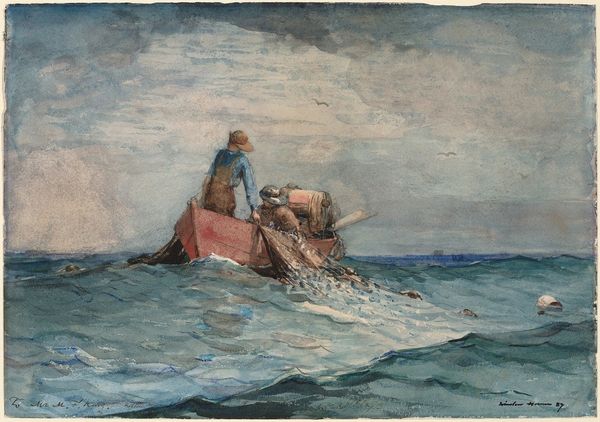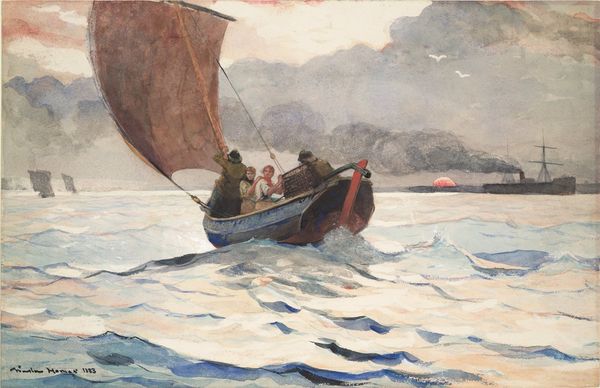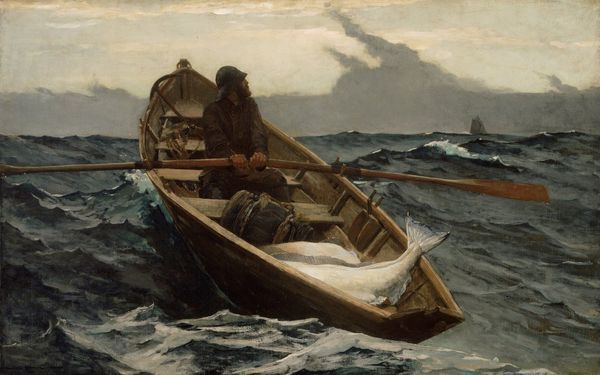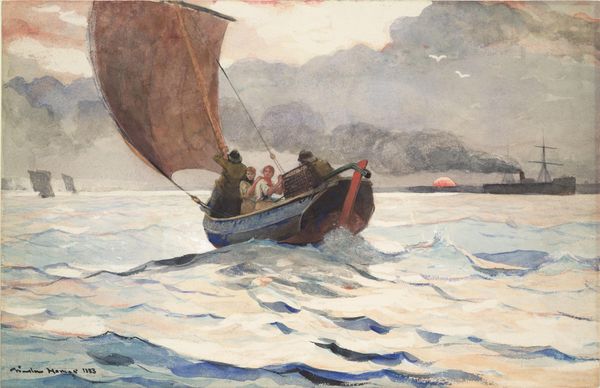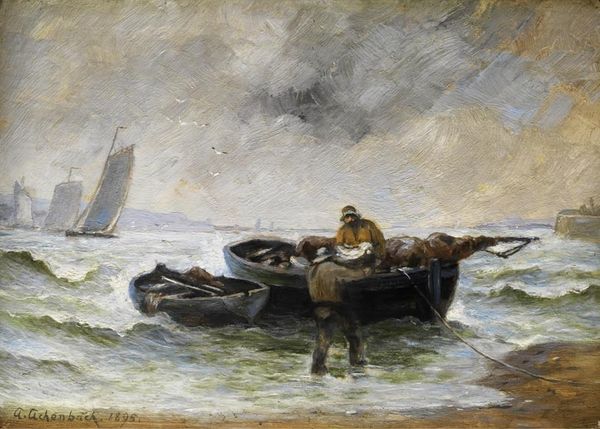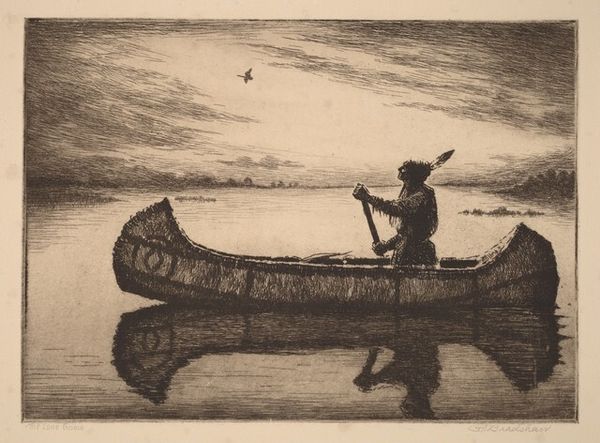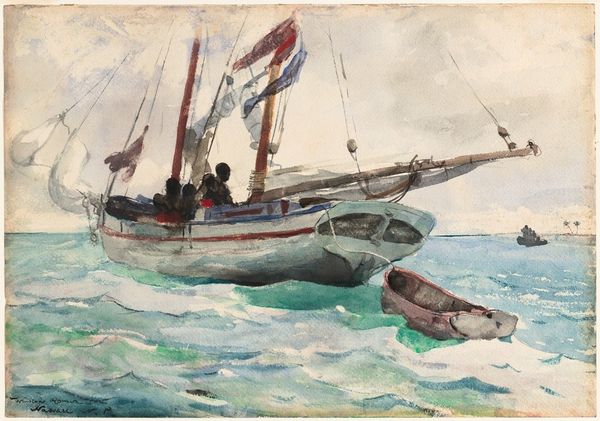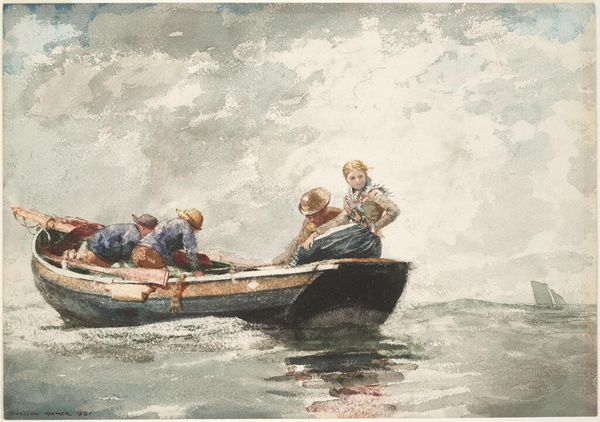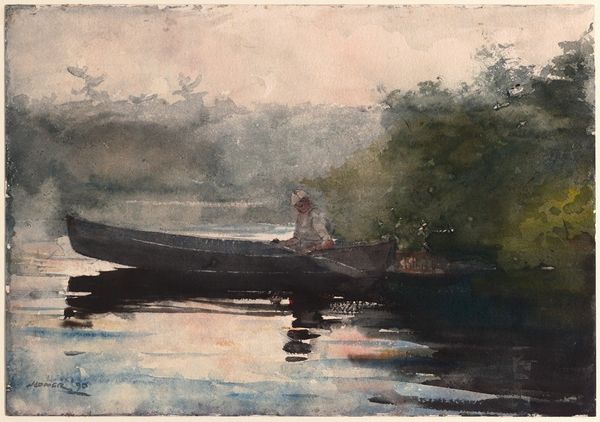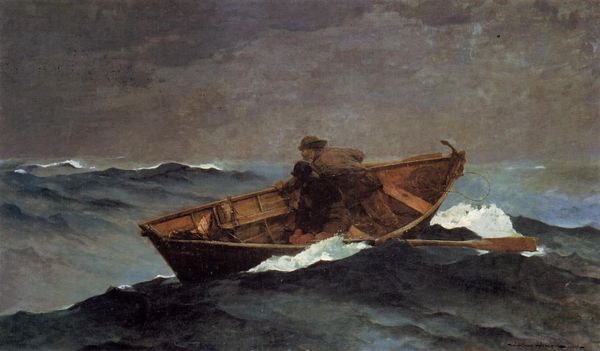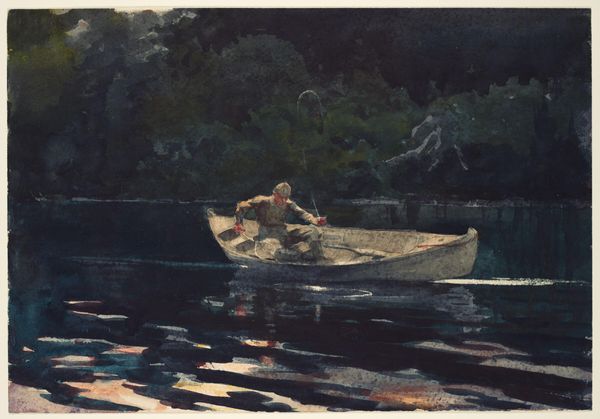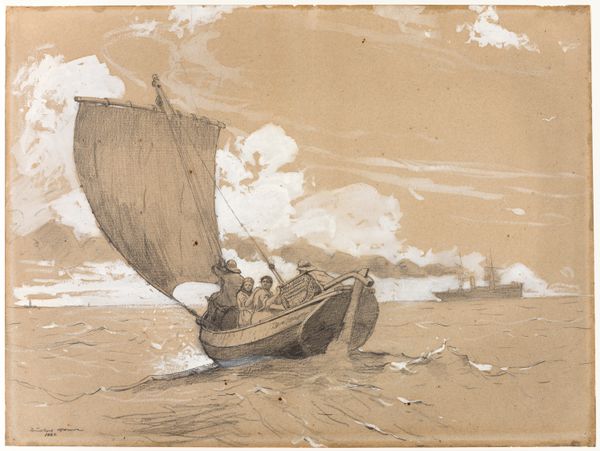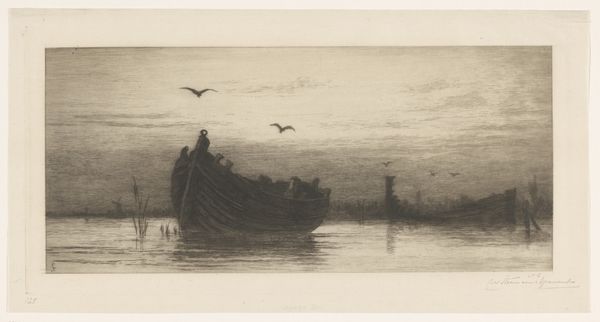
Copyright: Public Domain: Artvee
Curator: Winslow Homer's watercolor "Sketch for ‘Hound and Hunter,’" dating from around 1891-1892, plunges us into a rather stark scene. What is your immediate take on it? Editor: Gloomy, dramatic! That ominous sky reflected in the water – it creates a really somber mood. The way Homer uses dark blues and greens, it’s quite evocative. Curator: I’m interested in how the watercolor medium contributes to this effect. The fluidity allows for blending of color and shadow. Also, consider the paper itself: What type of surface could produce this effect? Do we see variations in paper quality available during the late 19th century influencing artists? Editor: That’s a good point about the paper and access to resources. Beyond the craft though, think about the implications of depicting this hunter, a figure of American masculinity, grappling with nature in what seems like a losing battle. This speaks to the romantic and anxious vision of American identity, particularly in the face of environmental concerns and changes happening during that era. It was painted just prior to the Panic of 1893, so social anxiety was certainly brewing in the US at this time. Curator: Right. Homer isn't simply representing a genre scene. He uses this narrative as a means of reflecting deeper concerns, and he uses very deliberate and refined production methods to get us there. Let's not ignore Homer's masterful control of the medium to enhance the emotive power and visual impact. He had become a master craftsman in terms of marketing, sale, and promotion. His watercolor techniques were, by the time this sketch was produced, a part of the public artistic imagination in a powerful way. Editor: So, in essence, the piece's accessibility as a watercolour in its period also cemented its presence and its themes? Curator: Precisely. Now, from a historical perspective, knowing that this piece ended up as a gift sheds further light on its potential intention. It might illuminate personal relationships and artistic intentions beyond commercial aims, but perhaps also offer insights into patronage within Homer's social circles. Editor: Absolutely. Considering it that way shifts the narrative from just artistic struggle to one intertwined with gift economies, social capital and possibly a direct conversation between Homer and the artwork's recipient. Thanks for this. Curator: It does help you read beyond face value, doesn't it?
Comments
No comments
Be the first to comment and join the conversation on the ultimate creative platform.
